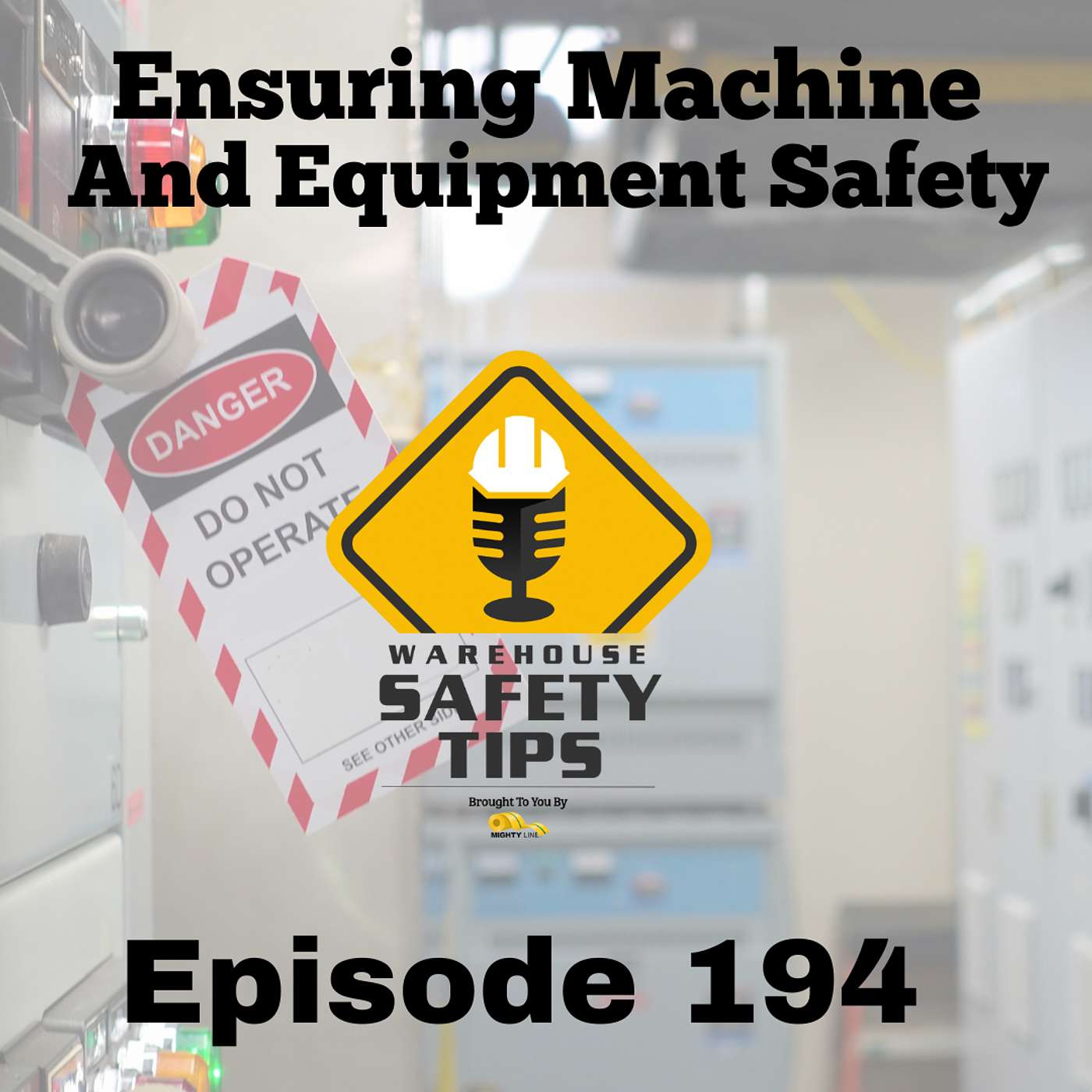S4 Ep194: Warehouse Safety Tips | Episode 194 | Ensuring Machine and Equipment Safety
- Author
- Wes Wyatt
- Published
- Wed 30 Aug 2023
- Episode Link
- https://audioboom.com/channels/5013934-safety-stripes-by-mighty-line-floor-tape-the-best-workplace-safety-podcast-talking-nfpa-ehs
Ensuring Machine and Equipment Safety
On today's podcast, we'll be talking about ensuring machine and equipment safety.
So - stay tuned.
You can find the show notes to each episode, links to the information mentioned on the podcast, the social media platforms we're on, and anything else related to the podcast at WarehouseSafetyTips.com.
If you're a seasoned Podcast Listener, this podcast will be different from most you listen to. It's based on exactly what the name implies - Warehouse Safety Tips. And since the people in that industry are busy - we know time is money so each episode will be as short and to the point as possible.
And now that all that is out of the way - let's get to the Podcast!
Ensuring Machine and Equipment Safety
Mechanical marvels have revolutionized the logistics industry, from forklifts moving heavy pallets to conveyor belts that transport goods. However, with their immense benefits, machines also introduce their risks. Ensuring the safety of both these equipment and those operating them is paramount.
Here are five crucial tips centered around machine and equipment safety in warehouses:
Regular Maintenance and Inspection:
On today's podcast, we'll be talking about ensuring machine and equipment safety.
So - stay tuned.
You can find the show notes to each episode, links to the information mentioned on the podcast, the social media platforms we're on, and anything else related to the podcast at WarehouseSafetyTips.com.
If you're a seasoned Podcast Listener, this podcast will be different from most you listen to. It's based on exactly what the name implies - Warehouse Safety Tips. And since the people in that industry are busy - we know time is money so each episode will be as short and to the point as possible.
And now that all that is out of the way - let's get to the Podcast!
Ensuring Machine and Equipment Safety
Mechanical marvels have revolutionized the logistics industry, from forklifts moving heavy pallets to conveyor belts that transport goods. However, with their immense benefits, machines also introduce their risks. Ensuring the safety of both these equipment and those operating them is paramount.
Here are five crucial tips centered around machine and equipment safety in warehouses:
Regular Maintenance and Inspection:
Example: Imagine a scenario where a conveyor belt malfunctions due to a worn-out part, leading to a bottleneck in operations and potential harm to the operator. Such situations can be avoided.
Safety Tip: Scheduling routine inspections can help identify potential wear and tear, ensuring that parts are replaced or repaired before they become hazardous. Maintenance logs should be diligently updated after every check.
Implementing Lockout/Tagout Procedures:
Example: An employee attempts to repair a machine without proper shut-off, leading to accidental activation and potential injury.
Safety Tip: Lockout/Tagout (LOTO) procedures involve shutting down equipment and ensuring they can't be restarted until maintenance or repair is complete. Clearly labeled lockout devices and tags can indicate which equipment is off-limits, ensuring workers don't accidentally start machinery undergoing repair or maintenance.
Ensuring Proper Machine Guarding:
Example: An employee working near a machine with exposed moving parts might accidentally get their clothing caught, leading to severe injuries.
Safety Tip: Machine guards act as barriers between the operator and dangerous parts of the machine. These guards should be regularly inspected for integrity and must be in place at all times during operation.
Clear Signage and Operational Guidelines:
Example: A machine that requires a cool-down period after operation might be mistakenly used continuously without breaks, causing it to overheat and pose risks.
Safety Tip: Every machine should have clear operational guidelines displayed nearby. This includes maximum operating times, weight limits, or other specific parameters. Bright and clear signage can serve as reminders and warnings for operators.
Providing Adequate Training:
Example: Staff operating a forklift without proper training might need to understand its turning radius, leading to collisions or dropped loads.
Safety Tip: Every machine or piece of equipment in a warehouse should come with a training module. Operators should be well-versed in its functions, safety features, and potential hazards, whether it's
